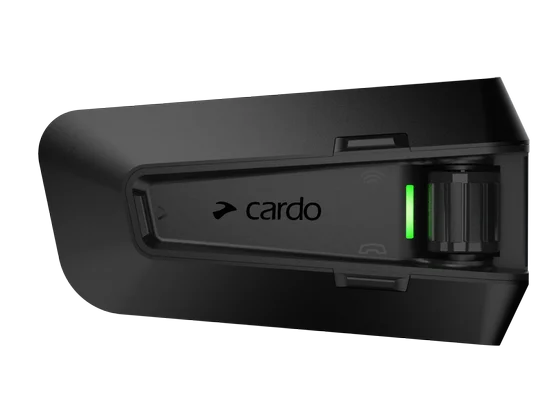As a rule, motorcyclists have to be okay with noise a little more than the average person. But there’s a difference between the satisfying roar of pipes and the annoying whoosh of wind underneath your helmet on the highway. That sound is what wind does when it makes contact with a solid object, and it’s not exactly pleasant to hear constantly during your ride.
Wind noise may even be able to damage your hearing when you’re exposed to it for a long time, so controlling wind noise is a must. Fortunately, inventive motorcyclists have figured out ways to keep wind noise under control inside a helmet. Let’s look at a few of the most important steps that riders can take to reduce wind noise inside their helmets.
The Right Helmet
A helmet that fits correctly will help keep noise levels manageable. A snug-fitting helmet isn’t just safer; it’s also quieter since air has fewer ways to enter the helmet. Different helmets are designed to accommodate various head shapes, ensuring a proper fit for effective noise reduction.
Certain helmet features also make helmets more soundproof, such as high-quality neck padding and an aerodynamic design that allows air to flow over the helmet with minimal turbulence. Due to their lightweight and strong properties, materials like fiberglass and carbon fiber can also enhance comfort and noise cancellation.
Of the many types of motorcycle helmets, full-face helmets offer the most wind and noise protection and are generally the safest.
If you have a helmet with a visor, such as a modular helmet, put your visor down. Riding with the visor up will create a lot of wind noise. In general, keeping your visor down while you’re on the road is advisable.
Beyond noise reduction and cancellation, the right helmet will be Department of Transportation (DOT) certified. Helmets with a DOT stamp ensure the highest standards of protection — from touring helmets to full-face helmets. This certification means your helmet will provide adequate protection while also helping with noise reduction. Additionally, look for Snell or ECE certifications. Snell certification involves rigorous impact testing, while ECE 22.06 is known for its stringent safety standards, often considered superior to DOT. Helmets with these certifications offer enhanced safety and reliability. Brands to look out for include Shoei, Arai, Bell and AGV, among others.
Windscreens
The shape of your bike’s windscreen influences the wind turbulence your bike creates. Certain windscreen shapes, such as V-shaped and bubble windscreens, will create less turbulence, and many riders swear by adding a windscreen spoiler to make their windscreen more aerodynamic.
So-called naked bikes, which don’t have a windscreen, are also a good option for riders struggling with wind noise. The lack of a windscreen makes the bike more aerodynamic and creates a lower level of air turbulence, often making for a smoother and quieter ride.
To properly install and adjust windscreens, ensure the mounting hardware is secure and follow the manufacturer’s instructions closely. Adjust the height and angle to suit your riding position and body size, maximizing wind deflection away from your helmet. Proper installation on your motorcycle enhances both performance and comfort.
Accessories
Deploying a few helmet accessories will also help control wind noise. First, you can help block out the wind from entering the gap under your helmet by wearing a scarf or padded helmet support. These can also make your ride more comfortable by protecting your neck from the cold.
Adding extra padding to a motorcycle helmet is also a popular choice. Many riders also like to wear earmuffs underneath their helmets, and others will insert a piece of foam or fleece between their cheek pads or around their ears to muffle the noise of the wind and the road.
Balaclavas and face masks can also be useful in filtering out wind noise. These are especially important if you have a half helmet or three-quarter helmet since they’ll also help protect your face from bugs, rocks and any other small debris that might come flying at you on the road. Balaclavas made from windproof materials are particularly effective in reducing wind noise and keeping you warm.
Finally, earplugs can also help protect your hearing while you ride. When you wear earplugs, it reduces wind and road noise, making for a more comfortable ride. Foam earplugs won't last as long but can be a budget-friendly option and good to keep around as spares. High-quality silicone earplugs are the type that most pros recommend since they’ll last for years and will still allow you to hear important noises on the road.
Properly fitting these accessories with your motorcycle gear will maximize their effectiveness.
Audio Equipment
With Cardo, you can do better than just blocking out noise. You can replace it with your favorite music, thanks to a groundbreaking collaboration between Cardo Systems and JBL. The Cardo JBL 45mm Audio Set is the perfect motorcycle helmet speaker set for blocking out any kind of annoying noise and replacing it with crystal-clear, HD sound that makes music, podcasts and phone calls pop like never before.
Our JBL helmet speakers go further than other motorcycle helmet speakers to bring you great sound. Their 45mm drivers are specially tuned for use in motorcycle helmets to provide better sound clarity on the road, and they’re designed to work seamlessly with other Cardo products like the Cardo Packtalk Edge and other Cardo devices. The JBL Audio Set also features a narrow 42mm speaker base, so you can mount it easily anywhere inside your helmet and design your own personal audio experience.
Motorcycle helmet speakers are safer and more convenient than using earbuds. Bluetooth helmet speakers allow you to hear important external sounds, improving situational awareness and safety on the road. Unlike earbuds, helmet speakers provide hands-free control for music, calls and GPS navigation. They also offer better sound quality, reducing wind noise and allowing you to enjoy your audio without increasing decibels. Helmet speakers fit comfortably within the helmet, eliminating the discomfort and risk of dislodgement associated with earbuds. Additionally, helmet speakers comply with laws in states that restrict the use of earbuds while riding. This makes them a great discussion starter among riders looking for the best audio solutions.
Importance of Wind Noise Reduction
Reducing wind noise in your helmet is necessary for both comfort and safety. Excessive wind noise can lead to hearing damage over time, diminishing the riding experience. Ensuring you have the quietest helmet, one that fits correctly and features high-quality neck padding, is essential for reducing helmet noise. Additionally, selecting the quietest motorcycle helmets with an aerodynamic design helps minimize road noise and improves overall airflow around your head.
Choosing the best helmet is just one step. Adding accessories like earplugs, neck rolls, and padded supports can further reduce unwanted sounds. Audio equipment such as the Cardo JBL 45mm Audio Set can replace the noise with a clear, enjoyable sound, enhancing your riding experience. Implementing these strategies can create a quieter, more enjoyable ride.
Ultimately, understanding and managing wind noise contributes to a safer and more pleasant journey. Whether you address it through a quiet helmet, a better windscreen, or specific accessories, these steps can significantly improve your ride. Keeping wind noise at bay is a practical way to ensure quiet and enjoyable rides.
Browse Our Bluetooth Motorcycle Headsets




